Chinchillas come in a wide variety of colors. The chinchilla coat colors vary depending on many different factors. You can find many color options for chinchilla coat colors if you know where to look. Some chinchillas have extraordinary colors and are unique, so you can only find them in some places.
You might not find chinchillas with your favorite colors everywhere, as some of them are very rare. Without any further ado, let’s look at the history of chinchilla colors and everything else that you need to know regarding chinchilla colors including some gorgeous pictures!
What colors does chinchilla come in?
Now, let’s look at all the different shades of color that chinchillas come in. Some chinchilla colors are very common colors, while some are very rare colored chinchillas. (Check out our chinchilla pricing guide to get a sense of cost by color).
The most common color in chinchilla that you will find nowadays is dark blue-gray color, which is natural. This is the color that you will find almost in every pet store. However, the history of chinchilla colors shows that before selective breeding, the color of this animal was yellow-grey. After generations of selective breeding, there were different color chinchillas introduced.
This was done through genetics to obtain different color chinchilla. The recessive genes were not expressed as clearly through the process of selective breeding. The dominant gene is through which most of the colors were expressed. Basically, the color with the dominant gene is the one that are expressed better.
Nowadays, the most common chinchilla colors available are white chinchillas, heterozygous beige and homozygous beige, black, white, velvet, and sapphire.
But there is a lot of other selection of colors that you can find as well, although some of them are not as easily available as the others. As the most common color is grey, you can find different shades of grey in chinchilla, ranging from a darker shade to a lighter shade of grey.
You can also find chinchillas with colored bellies, which usually have shades of white as belly color, brown bellies, and others.
The history of chinchilla colors
Chinchilla color chart
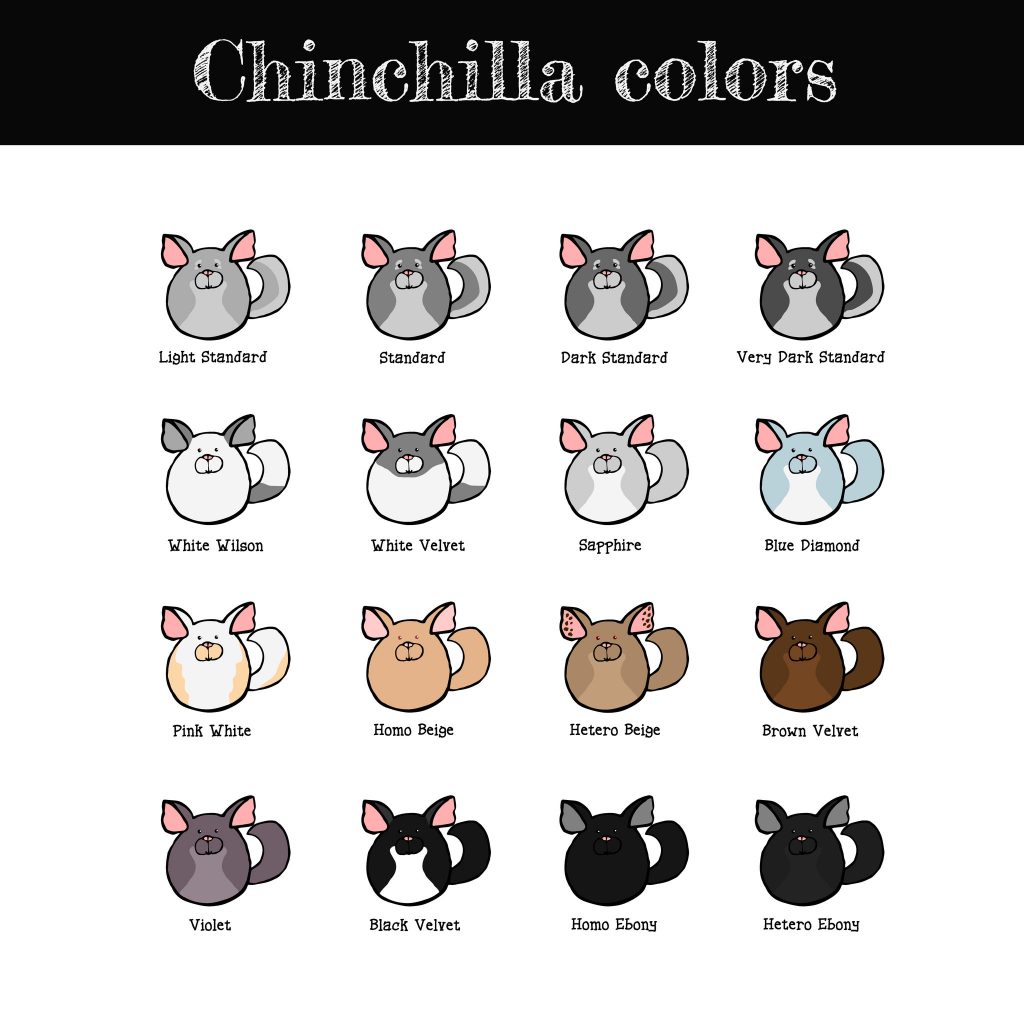
Before all of the selective breeding processes was done, chinchillas were a common animal with a common appearance. They were mostly found in the mountains of South America and were used by the people there for their soft fur. So what was the color of that fur?
As mentioned above, the original breed of chinchilla fur color was mottled yellow-grey in their natural habitat. Although there are many color combinations done for desired color development, the hair of the chinchilla always ends with black tips. Some colors that we find now were also done naturally through color mutations. The original chinchilla color was molted yellow-grey because it helped them blend in their habitat better, so they could hide successfully from the predators.
This selective breeding of chinchillas was done through 13 chinchillas which were brought to South America in 1927. The current color available was due to these 13 chinchillas that have led to the color variations that we see nowadays. Not only has selective breeding affected the color of the chinchilla fur, but it has also affected their eye colors. Now you can get chinchillas with red, black, and pink eyes.
All the colors that are now seen were obtained through genetic mutation, intentionally or not. Some of the colors that we see are through the dominant gene, while others are through the recessive gene. To know more, read the next section.
Understanding chinchilla pigmentation
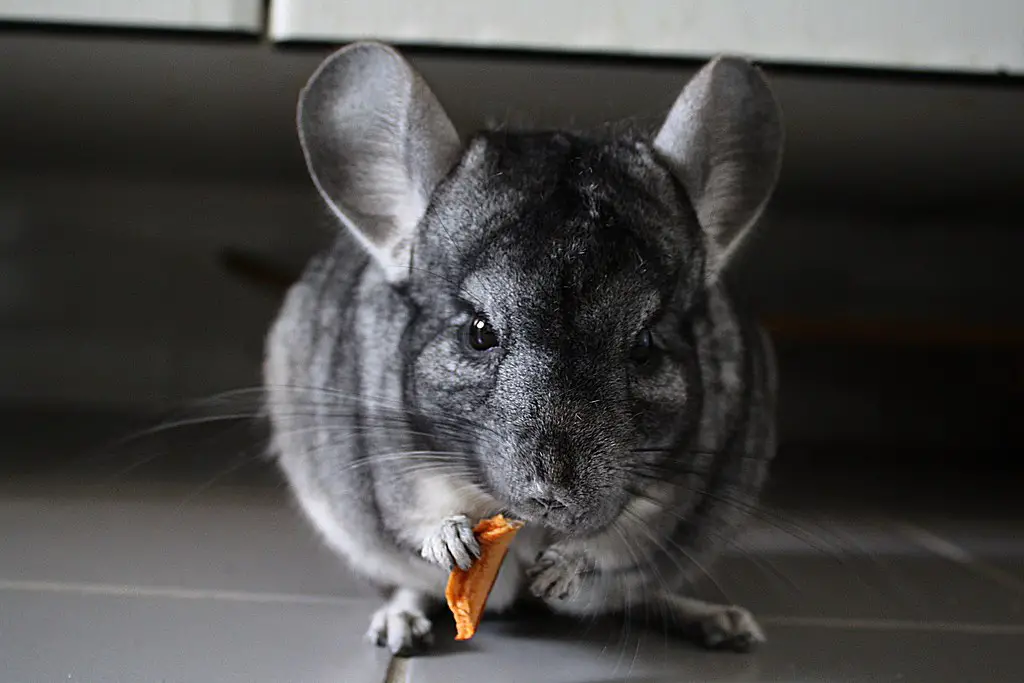
To understand how the chinchillas obtained such crazy colors after generations, you need to understand how genetic mutation has paved the way for this to happen. The colors depend on genes, may it be the ebony gene, beige gene, violet gene, or any other color gene. It is the reason for the color that you see.
The colors with dominant genes are blue-grey, beige, white, and ebony. In comparison, the colors with recessive genes are sapphire, violet, velvet, and charcoal. But what does all of this mean? An experienced breeder knows how to use genetics to get the perfect colors. Although the whole breeding process is very complicated, there is a simple explanation for what happens.
Genetics, in simple terms, depends on two types of genes, the dominant gene, and the recessive gene. If a chinchilla has two recessive or two dominant genes, it is called a homozygous pairing. If out of the two genes (for simplicity’s sake, let’s assume there are only two genes), one is a recessive gene, and the other is a dominant gene called heterozygous pairing.
This breeding process has led to all the breeding color options that we find now. You might wonder, what color will a heterozygous paired gene will display? Well, the dominant gene is the one that will be displayed if both are recessive genes; then, of course, the recessive gene will be the ones that are expressed.
Another important concept to understand is how these heterozygous parents can have children with recessive genes. To better understand this, here is an example,
- A parent chinchilla has color genes (Aa), and another chinchilla has color genes (aa). Now when they have kids, there can be four combinations of color genes in their offspring (Aa, Aa, aa, aa). The babies with recessive color genes (aa) will show the recessive color on their fur. This color-matching accuracy isn’t always easy to predict.
Another concept in breeding that you need to understand is pigmentation. There are two pigments that chinchillas can have, yellow pigment and black pigment. White is also a color, but it is not a pigment, as a while is an absence of pigment.
These pigments determine what colors the chinchillas will have, where the colors will be expressed, and up to what degree these colors will be expressed. This is exactly why some colors of chinchillas have a shaded appearance while some colors of chinchillas have a matte appearance or a solid color in them. This is why experienced breeders can produce colors like white sapphire, a touch of velvet, and a white mosaic.
Color genetics & chinchillas
After we know how these colors are expressed and how the breeders achieve the accurate color, they desire with their expert capabilities. We shall now see all the actual colors that are available.
Standard Grey

The standard greys are the most commonly found pet chinchilla color. They have grey backs and grey sides but with a white belly. This grey coloring can differ from a dark shade to a light shade of grey.
White
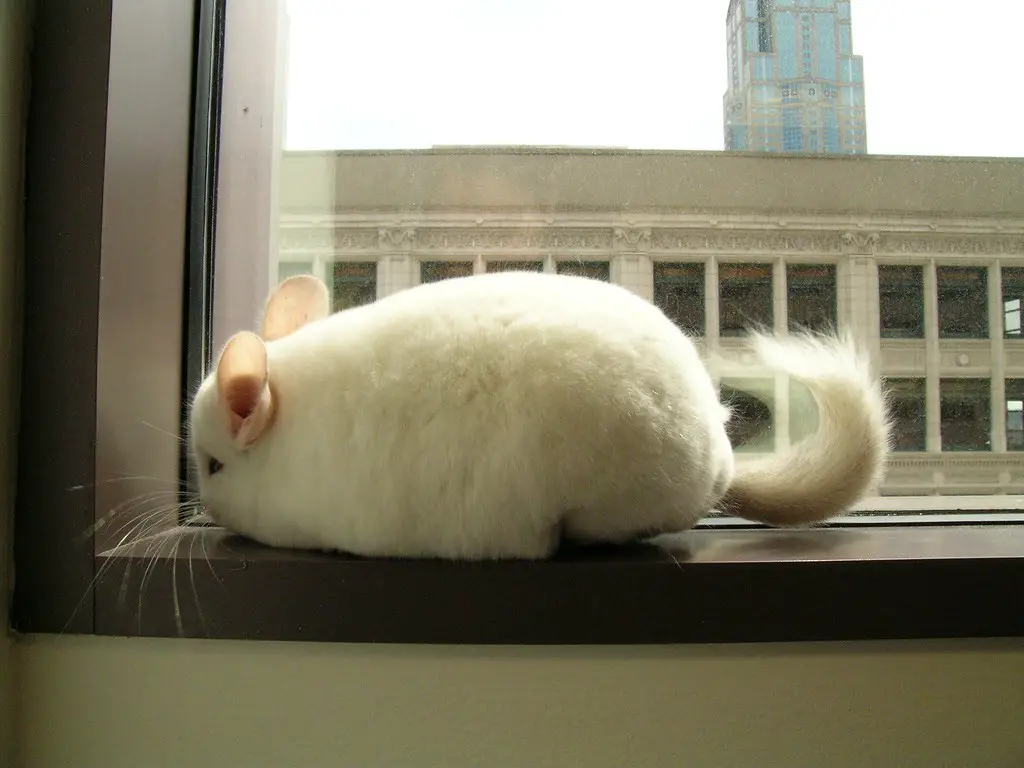
White chinchillas can be pure white, but if they have been cross-breed, you can find colors like ebony white or sapphire white. A solid white chinchilla has red or pink eyes, but other cross-bred ones can also have black eyes.
Ebony

If homozygous, they are entirely black. However, if they are heterozygous ebony, then they can have a touch of grey as well. The heterozygous ebony chinchillas can sometimes be mistaken for standard grey ones.
Sapphire

These are some of the rare varieties that lack the black tip at the end of the hair. They have white underbellies and black eyes. Moreover, homozygous parents are needed to produce this color.
Heterozygous beige

The beige coloring with heterozygous beige chinchilla fades into lighter color along their sides. Their backs are the darkest part of their body. Heterozygous chinchillas are darker than homozygous ones.
Homozygous beige

It is closer to a Champaign color as it is lighter than heterozygous ones. The chinchillas with this color have a white underbelly and pink ears.
Violet
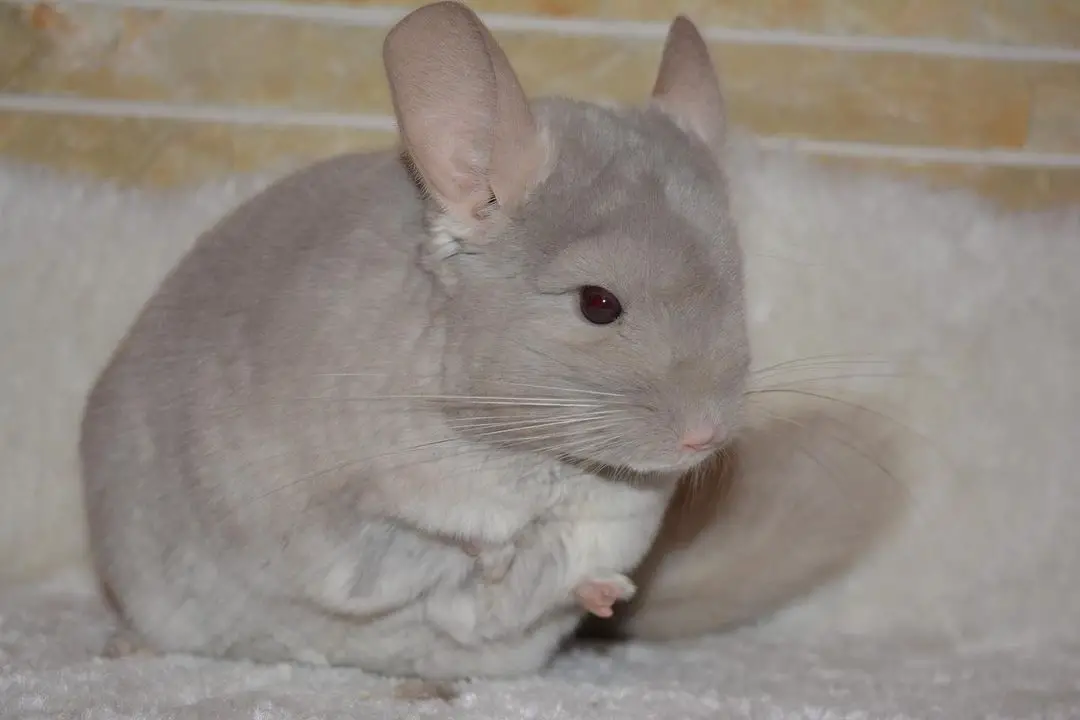
Like sapphire, their hair has no black end to it. These ones have slight purple hues in the hair and look very cuddly. First, violet chinchilla was found in Zimbabwe.
Charcoal
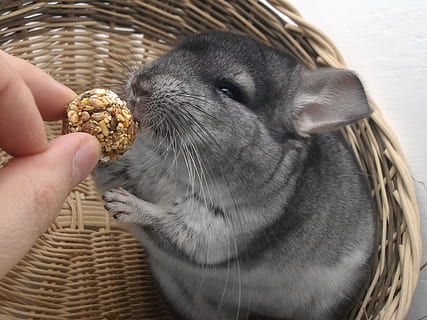
These chinchillas can range from grey to black, but their matte appearance makes them unique. They are rare and have all black ears and eyes.
Black velvet

The chinchillas with black velvet fur have a veiled appearance. They have grey sides and a white underbelly. One of the most famous and sought-after breeds is black velvet.
Brown velvet
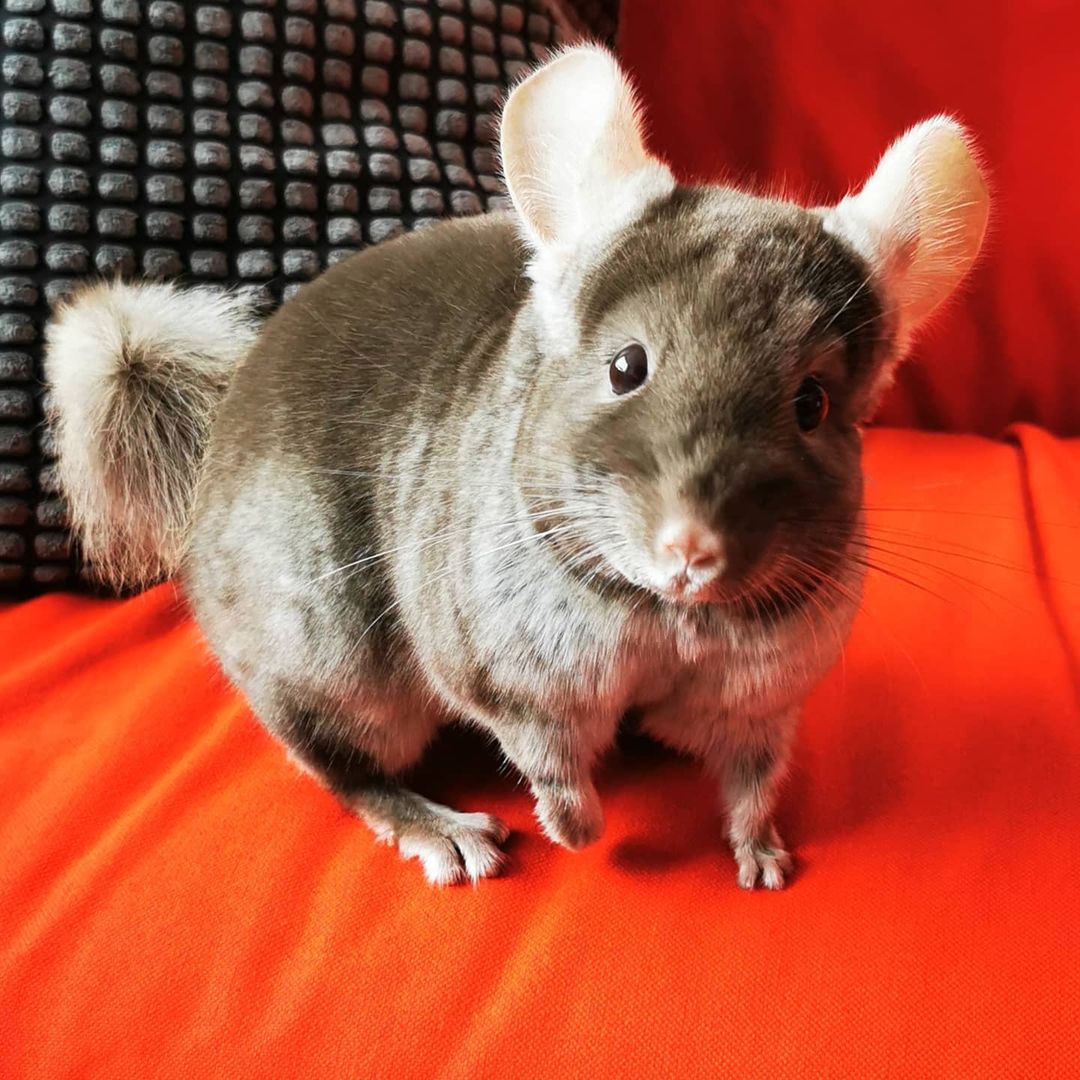
Kind of similar to black velvet but in brown color. These can not be bred again with the velvet gene, as has the lethal gene.
White mosaic

The fur of the white mosaic can vary from mostly white to mostly gray or frosted gray, and the color is quite unpredictable. It has black ears and dark eyes as well.
Silver mosaic

Grey and while chinchillas end up producing silver mosaic chinchillas. These are very similar to white mosaics with a little difference in the pattern of fur.
Tan mosaic
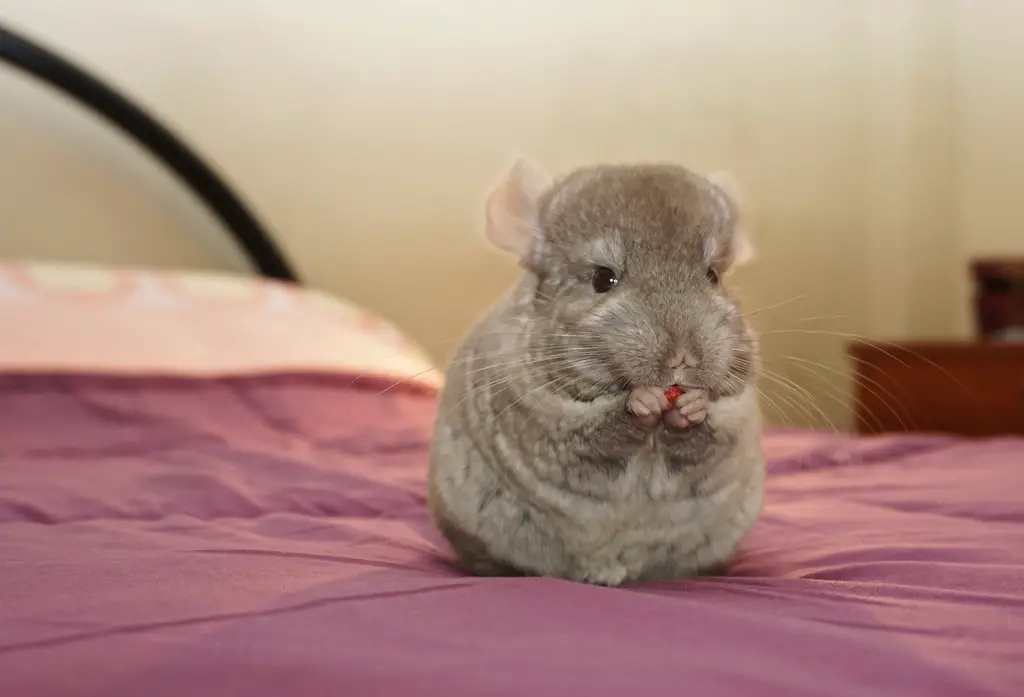
These are also unpredictable. Some will have a pure white coat, while others can have frosted tan, mostly tan, or mostly white fur. The homozygous tan mosaic and heterozygous tan mosaic have a slight difference as well.
Ebony mosaic

These are also mosaic so can’t be bred for specific markings as it can have a difference that can’t be predicted. The underbellies of the ebony mosaic chinchilla are ebony or black.
Pink white

Also known as beige mosaics and can be born with a variety of colors. The babies with pink, white genes can be born with a mixed pattern with both white and beige.
Light and dark pastel
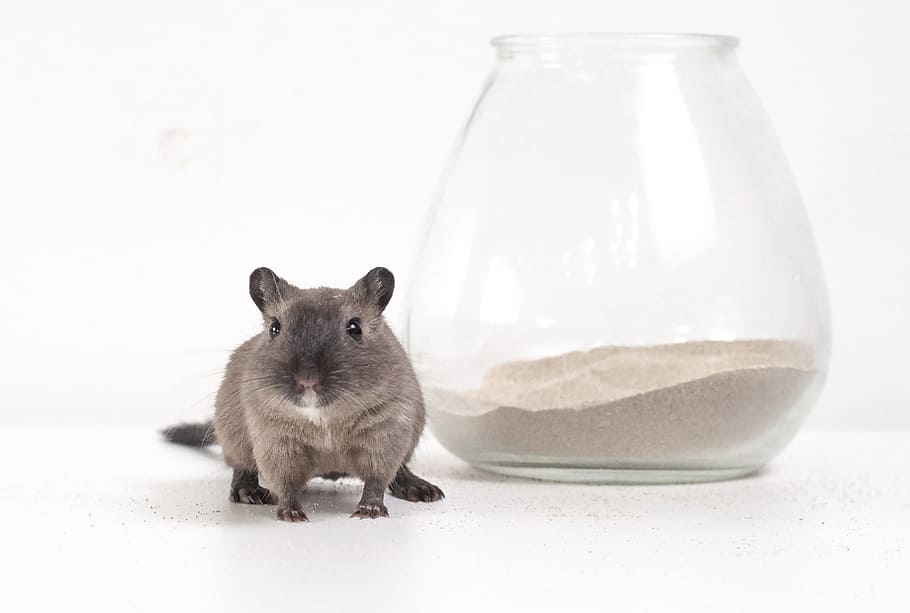
These are interesting little creatures as they are born pure white but turn beige as they grow up. As the name suggests, the dark pastel chinchillas have darker fur than the light pastel chinchillas.
Rare chinchilla colors
Some of the chinchillas are found everywhere. However, there are some chinchillas that are very rare and hard to find. If you get your hands on them, they can cost a lot more than ordinary chinchillas as well. Some of the rare chinchilla colors that are hard to find are listed below.
- Touch of velvet
- Golden mosaic
- Silver mosaic
- White mosaic
- White violet
- White sapphire
- Goldbar
- Brown velvet
- Black velvet
Goldbar is one of the rarest colors of chinchilla that you can find. There are over 30 different colors of chinchilla that you can find, so when looking for one male, sure you know what you want. In conclusion, chinchillas are a unique and fun animal for someone ready for the commitment to these furry friends!
Hi, my name’s Elena Coolidge, and this is my site. Chinchillas are so cute and such intelligent animals that make great pets. They’ve become the subject of fascination for many animal lovers who enjoy their antics. I blog about their care, where to buy them, breeders, and more. Shoot me an email if you have a question!
